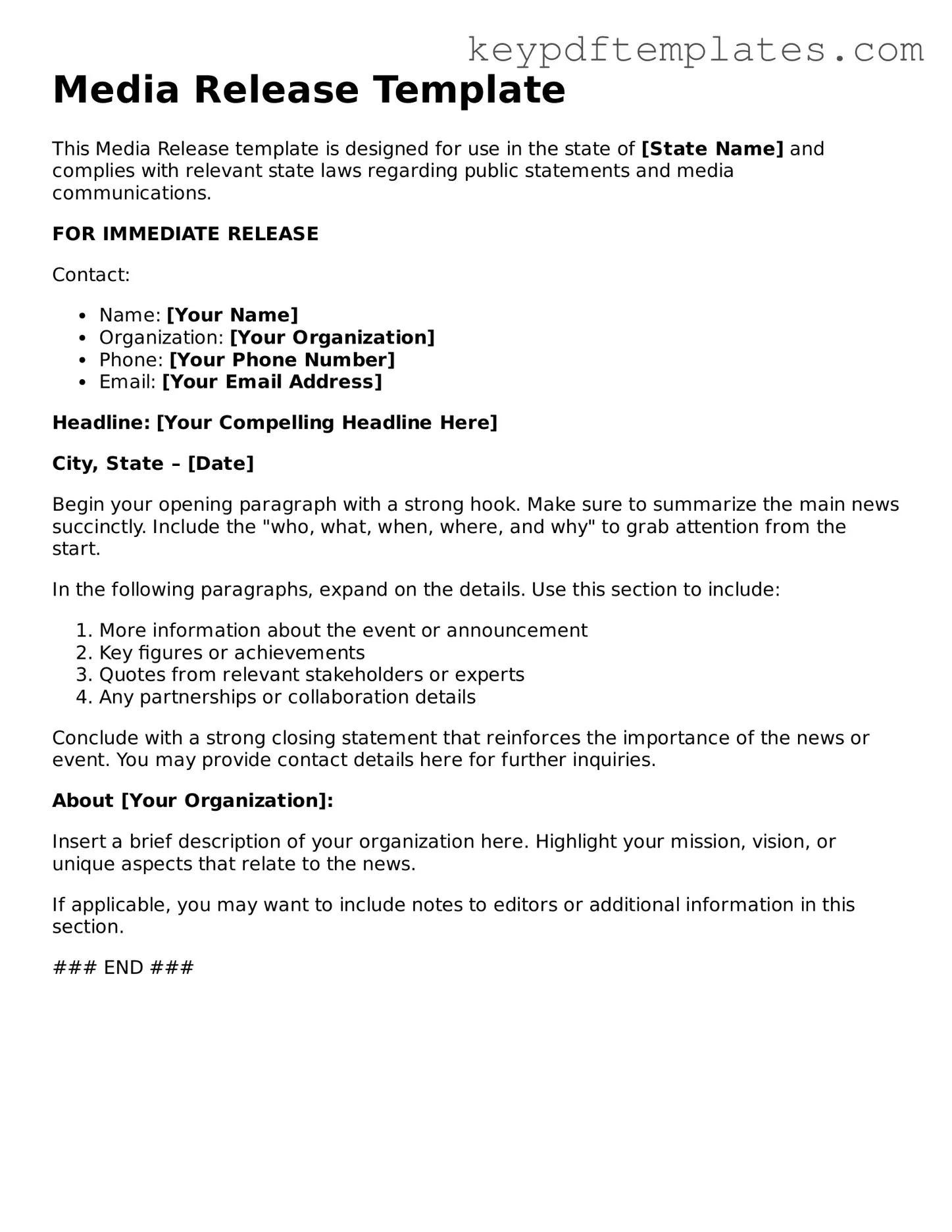Printable Media Release Template
The Media Release form is a document that allows individuals to grant permission for their images, voices, or other personal information to be used by media outlets. This form is essential for protecting personal rights while enabling the sharing of stories and experiences. Understanding its importance can help you make informed decisions about your privacy and public presence.
Modify Document Online
